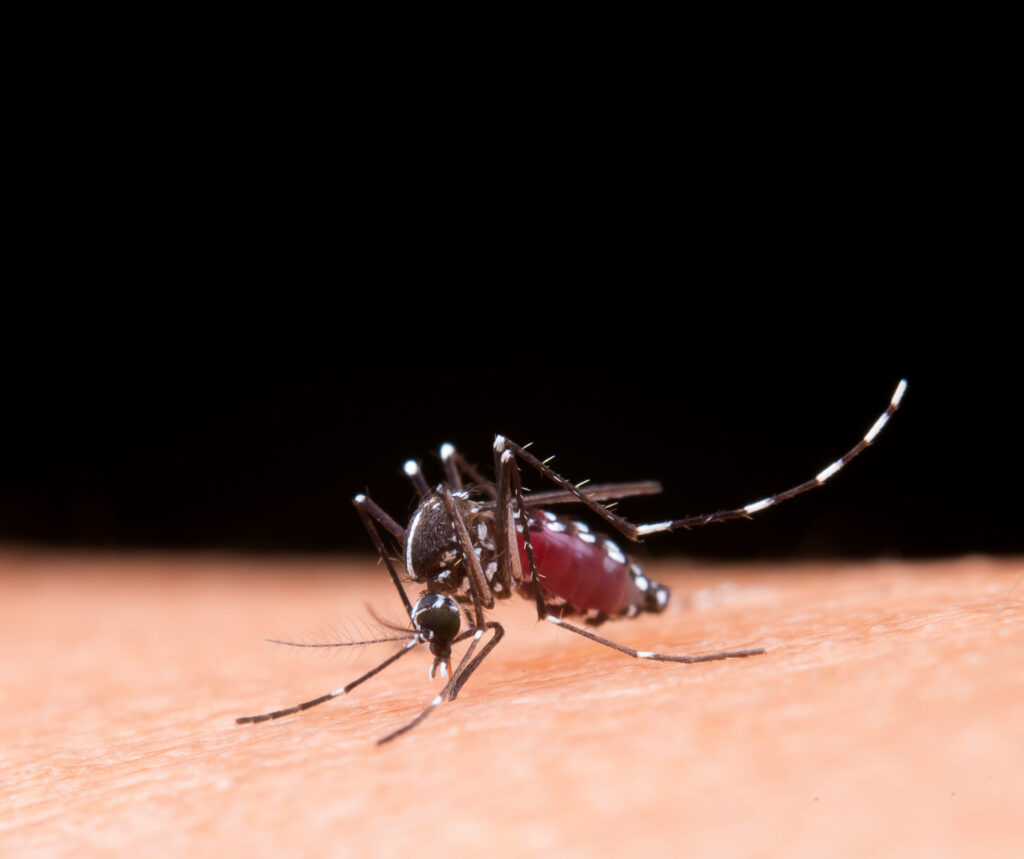
The information provided was valid at the time of the publication of this CPD article.
The risk of exposure to Lyme disease is greatest in late spring and early summer, so now is the time to ensure that we and our patients are aware of the risks posed by tick bites.

The risk of exposure to Lyme disease is greatest in late spring and early summer, so now is the time to ensure that we and our patients are aware of the risks posed by tick bites.
Pharmacists have an important role in preventing and treating Lyme disease through:
Lyme disease (also known as Lyme borreliosis) is an infection caused by Borrelia bacteria. It is transmitted to humans through the bite of a tick infected with Borrelia bacteria. Infected ticks are active from spring to autumn and this is when we expect to see cases of Lyme disease most frequently in Ireland.
Lyme disease can be prevented with early identification and removal of ticks. If symptoms of Lyme disease are identified early, there is a high cure rate with optimal antibiotic treatment.
Lyme disease can affect anyone but is most common among hill-walkers, hikers, campers and others whose leisure activities or work takes place in tick habitats or those who are in contact with certain animals e.g. deer and sheep. Ticks can be found in both urban and rural environments but are most likely to be found in the following areas:
Key points |
|
Healthmail –
Passwords, verification code, PSI details |
NIO – Clinical (advice, incidents report, additional documentation) |
UDD – Order & Delivery (supply/damage report) |
NIO – Cold Chain
(storage condition concerns) |
PCRS – recording a patient who received a vaccination and does not provide a PPSN |
PCRS – Payment (claims) |
Figure A: Image of Erythema Migrans Typical ‘bulls-eye’ rash | Figure B: Image of a bite reaction |
|
|
Advice to reduce the riskof being bitten by a tick: |
|
Healthmail –
Passwords, verification code, PSI details |
NIO – Clinical (advice, incidents report, additional documentation) |
UDD – Order & Delivery (supply/damage report) |
NIO – Cold Chain
(storage condition concerns) |
PCRS – recording a patient who received a vaccination and does not provide a PPSN |
PCRS – Payment (claims) |
The first stage of Lyme disease may present as a skin rash and/or flu-like symptoms. The most common noticeable evidence of early infection is an expanding red rash with a central clearing at the site of the tick bite (known as erythema migrans or a ‘bulls-eye’ rash – see figure A)). It usually develops between three days and a month after a tick bite and lasts for several weeks. Not everyone with Lyme infection develops a rash and this ‘bulls-eye’ pattern is only present in some cases. The rash occurs in about 60% of patients (less frequently in children). It is important to be aware that a rash (that is not erythema migrans) can develop as a reaction to a tick bite. This rash (see figure B) usually develops and recedes within 48 hours from the time of the tick bite.
Ticks tend to attach and feed on the legs (50% of all bites) and arms (20% of all bites) of adults. Less commonly they bite on the torso, head, neck and groin. This highlights the importance of keeping arms and legs covered and checking these areas after returning from typical tick habitats. In children, ticks most commonly bite the head region, around the hairline (40%) and around the neck (40%). These would be the most important areas to check on a child.
Patients may also complain of influenza-like symptoms such as headache, sore throat, neck stiffness, fever, muscle aches and general fatigue. Occasionally, there may be more serious symptoms involving the nervous system, joints, the heart or other tissues. These complicated infections generally require referral to specialist services. Although severe disease is rare, it most frequently arises due to previously unrecognised early Lyme disease or inadequate initial treatment.
The single most important measure that will prevent Lyme disease is the prevention of transmission of the bacteria from an infected tick to a person and this involves either:
How to remove ticks | |
| |
Only a small number of ticks are infected with the bacteria that cause Lyme disease and therefore tick bites do not always result in a person becoming infected. The longer the tick has been attached to the skin, the greater the chance of being infected. There is compelling evidence to suggest that if a tick is removed as soon as it bites or in the hours following a bite, the risk of infection will be low. This is why it is important that a person checks themselves, family and pets for attached ticks immediately following exposure to typical tick habitats.
If a tick bite is identified, Lyme disease can be prevented with appropriate antibiotic post-exposure prophylaxis, however antibiotics are not always warranted. Think of the 36-hour timeframe: If the tick has been attached for less than 36 hours, the risk of Lyme disease is very low and antibiotics are not recommended. If it is unknown how long the tick has been attached or if it has been attached for greater than 36 hours, a single dose of doxycycline can be offered as post-exposure prophylaxis.
There is currently no evidence available to support the use of alternate prophylactic antibiotics for Lyme disease. As the risk of infection is low and Lyme disease is readily treatable once symptoms develop, watchful waiting in the case of contraindication to doxycycline is recommended instead of antibiotic prophylaxis.
Appropriate antibiotics minimise the likelihood of the development of late stage infection and long term complications of Lyme disease. All patients with symptoms of Lyme disease, including erythema migrans (‘bulls-eye’ skin rash) should be treated with an appropriate course of antibiotics. The HSE national antibiotic guidelines for Lyme disease are available for pharmacists to access for further guidance on the recommended antibiotic choice, dose and duration of treatment (www.antibioticprescribing.ie).
Some people who are diagnosed and treated for Lyme disease continue to have symptoms such as tiredness, aches and loss of energy that can last for years. Antibiotics are not recommended where Lyme disease has previously been adequately treated as there is no demonstrable clinical benefit from prolonged antibiotic therapy and the risk of harm outweighs the benefit. In this case, supportive management can be offered (e.g. management of chronic pain, fatigue, depression, sleep disturbance) and specialist advice sought if necessary.
“Lyme disease can be avoided by not getting tick bites or by removing ticks as soon as possible.”
Case study: Doxycycline for post-exposure prophylaxis of Lyme disease in children | |
Scenario: I receive a prescription for a single dose of doxycycline for a seven year old child. She has been seen by the GP following a tick bite that occurred on a weekend away. Is doxycycline safe for use in children? Answer: The use of doxycycline in children under eight years of age is unlicensed in Ireland. However, safety data from research in Europe and the US in recent years has provided reassurance that a single dose of doxycycline is safe in children under eight years of age and is not likely to produce either dental discoloration or enamel hypoplasia. This has been endorsed by the American Association of Paediatrics (AAP Red Book 2018) and Children’s Health Ireland (CHI) Group. The HSE national antibiotic prescribing guidelines (www.antibioticprescribing.ie) include a sample calculation to support pharmacists when dispensing doxycycline for children for the prevention of Lyme disease. | |
References available upon request.
All images courtesy of antibioticprescribing.ie
References: (not for publication)
Róisín Foran

Share This Page